The Bighorn and Little Bighorn Rivers run close to Billings. The Battle of the Little Bighorn is one of the most disputed battles of US history. It was also part of one of the many shameful treaty violations by the US government.
The circumstances, battle and follow-up are all complicated. I’ll try to summarize here.
In 1868, the US government signed a treaty with several Plains Indian nations ceding much of western Wyoming, including the Black Hills, to them. However, when gold was discovered in the Black Hills, Americans began to trespass on Indian territory. The US army at first tried to stop the illegal hordes, and when that failed, the government offered to purchase the Black Hills. When the Indians refused, the government ordered them to return to reservation lands, and declared that those who did not do so would be treated as hostiles.
Meanwhile, the Indians grew increasingly defiant of these orders. Sitting Bull, a spiritual leader of the Lakotas, held a Sun Dance and received a vision of enemy soldiers falling upside down in the Lakota Camp. This was interpreted as a military victory over the American forces. This, as well as desperation about life in the reservations, a longing for the traditional Plains life and Sitting Bull’s offer to form a united front, attracted a large group of Lakotas, Cheyennes, Arapahoe, and other plains tribes to join him in an encampment of about 7000 people, including about 1500 warriors, on the shores of the Little Bighorn. Sitting Bull did not participate in the battle directly, but his leadership was a key to the fearlessness of the warriors.
Meanwhile, Custer, a hero of the civil war and a veteran of many battles against the Indians, strategized that his best tactic for ensuring surrender of the Indians was to capture the women and children. He was unaware of the size of the encampment, but hoped to round up the civilians while the warriors were engaged. To this end, he divided his forces, which, unknown to him, were greatly outnumbered.
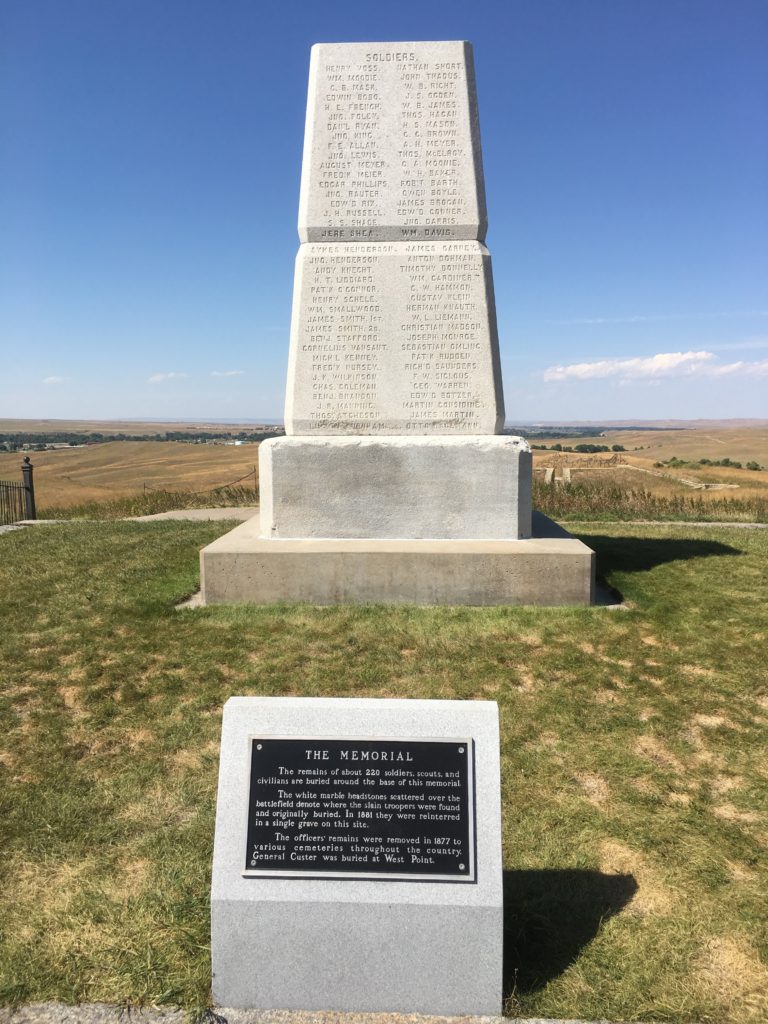
The details are best read about elsewhere. In short, the Indians won a resounding victory in the battle. Custer and the 41 men accompanying him, including his brother, all died. 60 – 100 Indians and at least 249 Americans lost their lives.
The Little Bighorn National Monument tries to explain both sides, but mostly explains the battle itself. A ranger gave an animated presentation. You can wander over the main part of the battlefield and the hill on which Custer and his men were killed (and later buried).
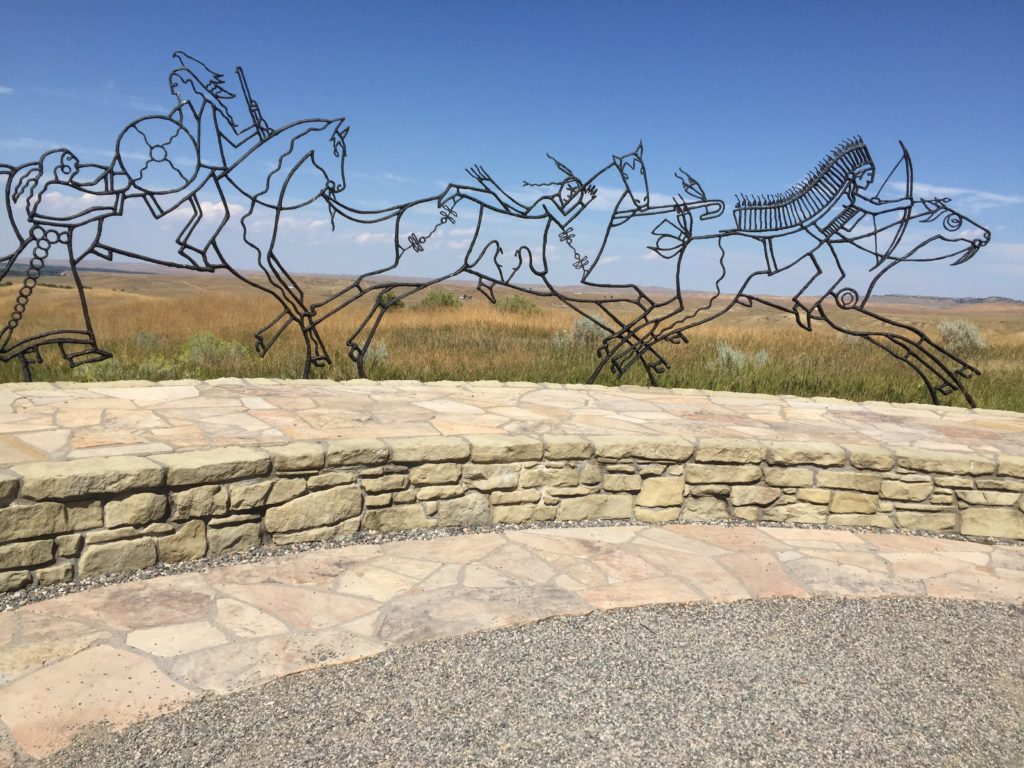
There is a memorial as well to the Indian warriors – the Indians moved their remains from the area immediately after the battle when the encampment broke up.
As we know, the Indians won the battle but lost the war. In the end, the tribes were forced onto the reservations and the Black Hills were opened to American settlement. Sitting Bull and his followers fled to Canada.
They remained in Canada for 4 years before political tensions and their inability to procure enough game forced them to return to the US, where Sitting Bull formally surrendered to the US government.
Travelling on, we crossed the Crazy Woman River – no idea what the story on that is! We decided, however, to camp at the Crazy Woman Campground in Gillette — we never met any of the staff, but we presume they just liked the name. They did have an eclectic collection of rocks, broken sculptures, etc by the office. In any case, it was a small but functional campground.
Gillette is the center of the coal mining industry in Wyoming. We did not visit the town (or the museum, which is right across the road from the campground and is apparently quite good). One thing about traveling is that one hears local news. As we were leaving, the news was about programs for coal miners who were losing their jobs as the industry implodes.
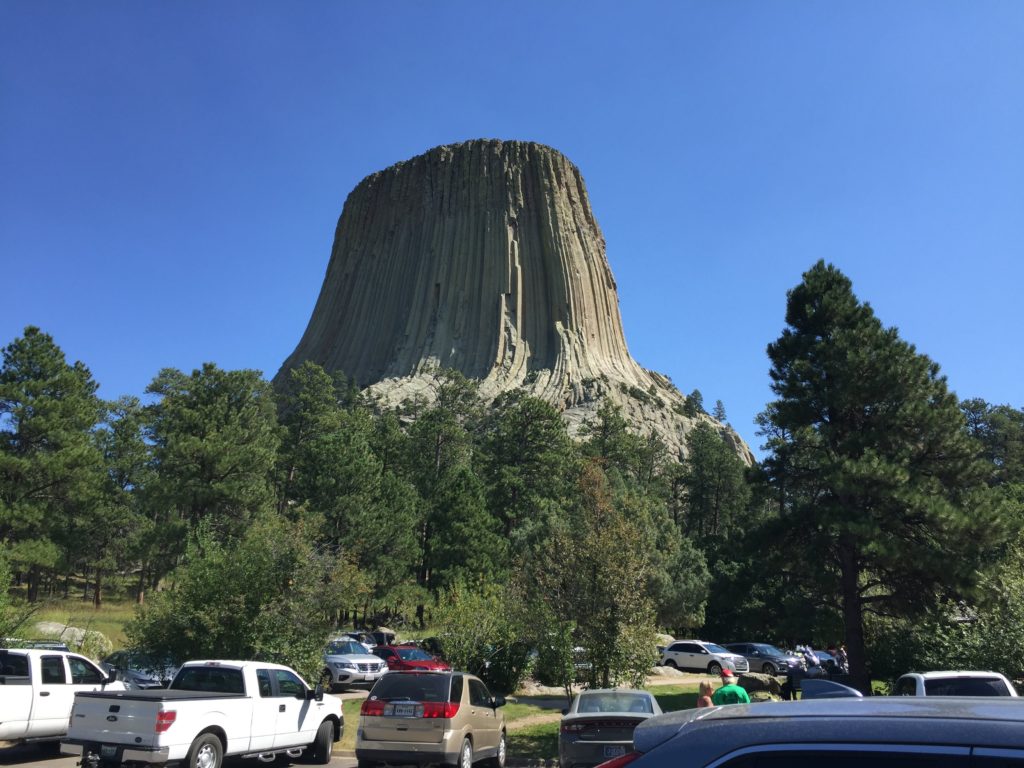
From Gillette we went to Devils Tower (known to the Indians as Bears’ Lodge). It is an amazing chunk of igneous rock! It looks like there are huge columns going up to the top. These are features that occur in igneous rock if it cools under certain conditions. I assumed that the tower is basalt, like the famous columns in the Giant’s Causeway in N. Ireland, but apparently it is not.
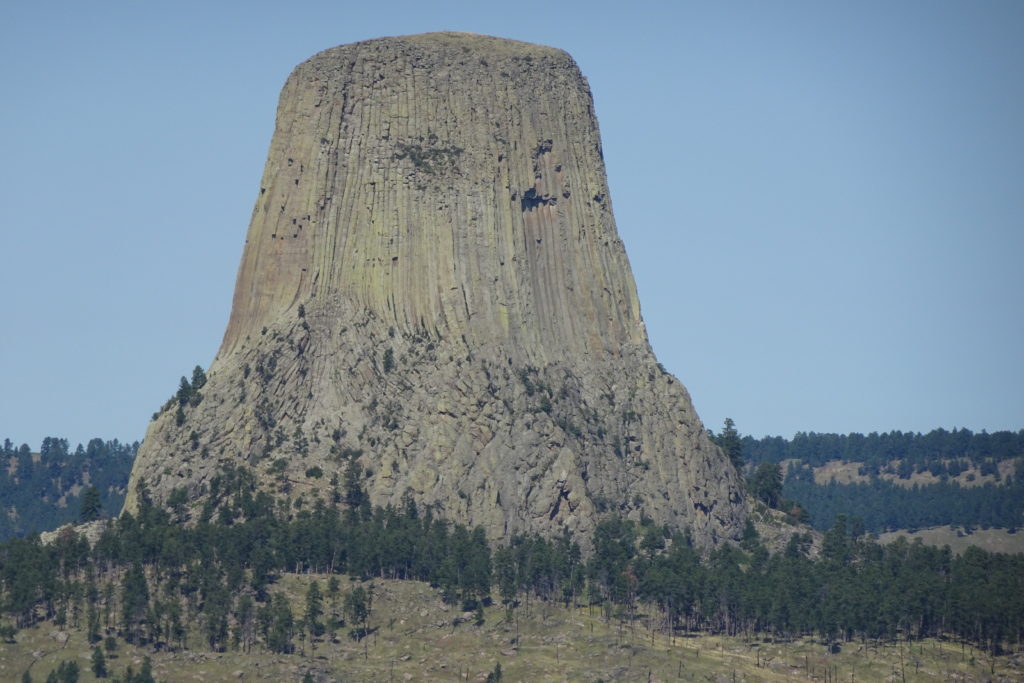
Actually Devils Tower is a bit of a geological puzzle, with several theories about its origins. There are some other smaller but similar features nearby. There are several hikes around the base – we took the outer circle, which provided nice views from several angles. The tower looks different as you walk around it, and also as the lighting changes due to sun angles.
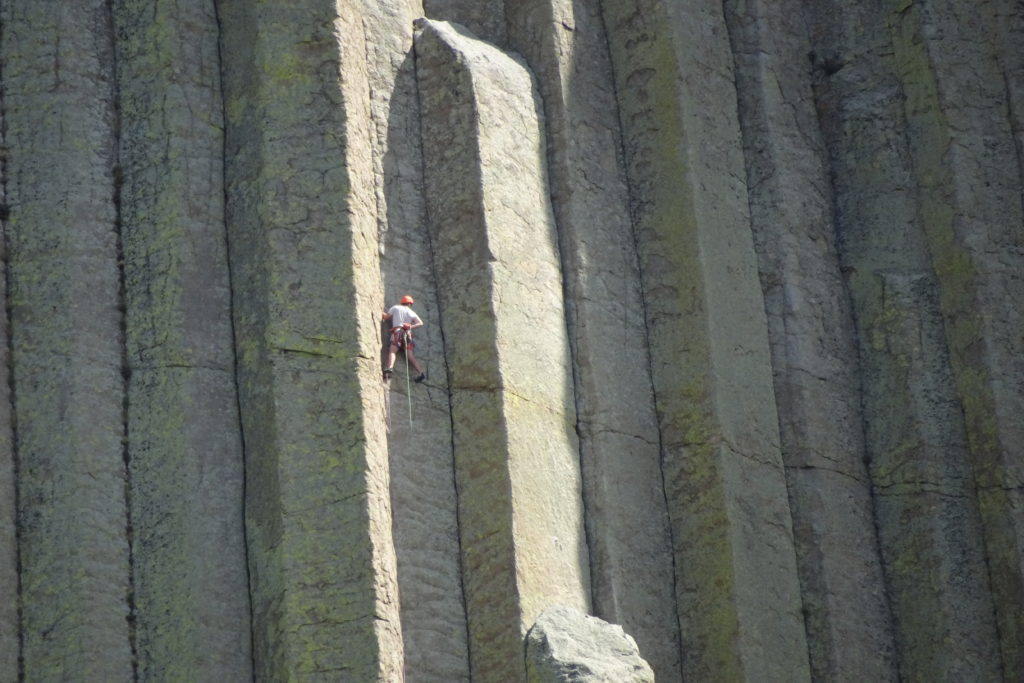
The tower is a favored climbing location. As someone who does not climb it looks like it would be tiring, but perhaps not technically challenging if you can grab a crack and follow it all the way up. But of course I am sure that what looks continuous from the ground has more variation when you are actually clinging to the cliff. (I am certainly not going to try it out – no strength, no skill.)
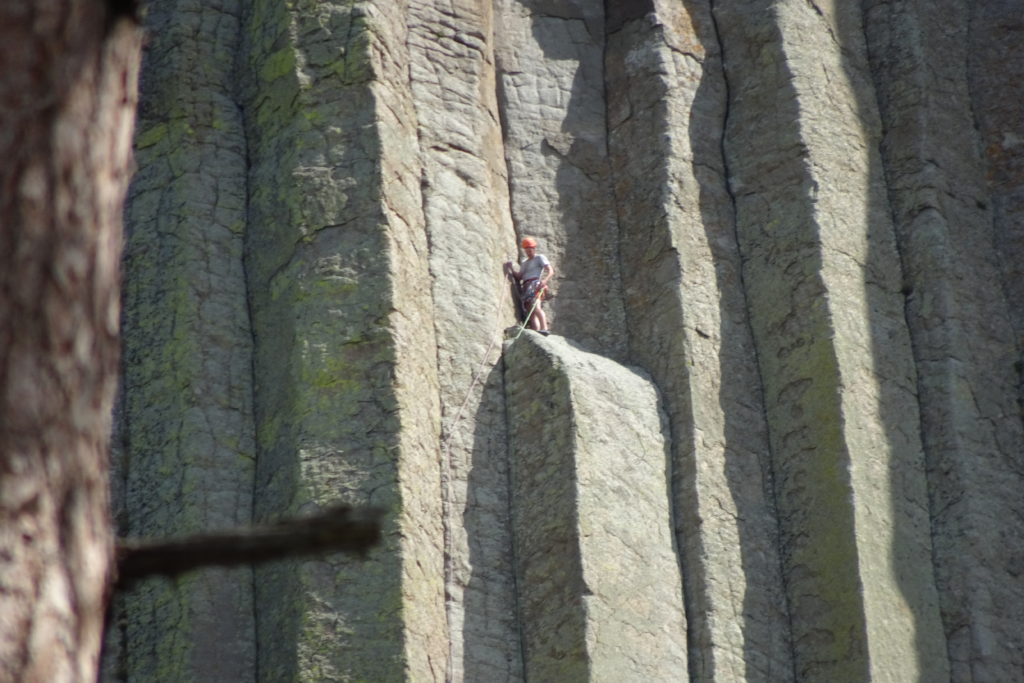
We watched a small party of climbers and you can see in close-up what some of the challenges might be.
In 1941 parachutist George Hopkins landed his chute at the top of Devils Tower. He was trying to demonstrate that precision landing was possible, and he succeeded.
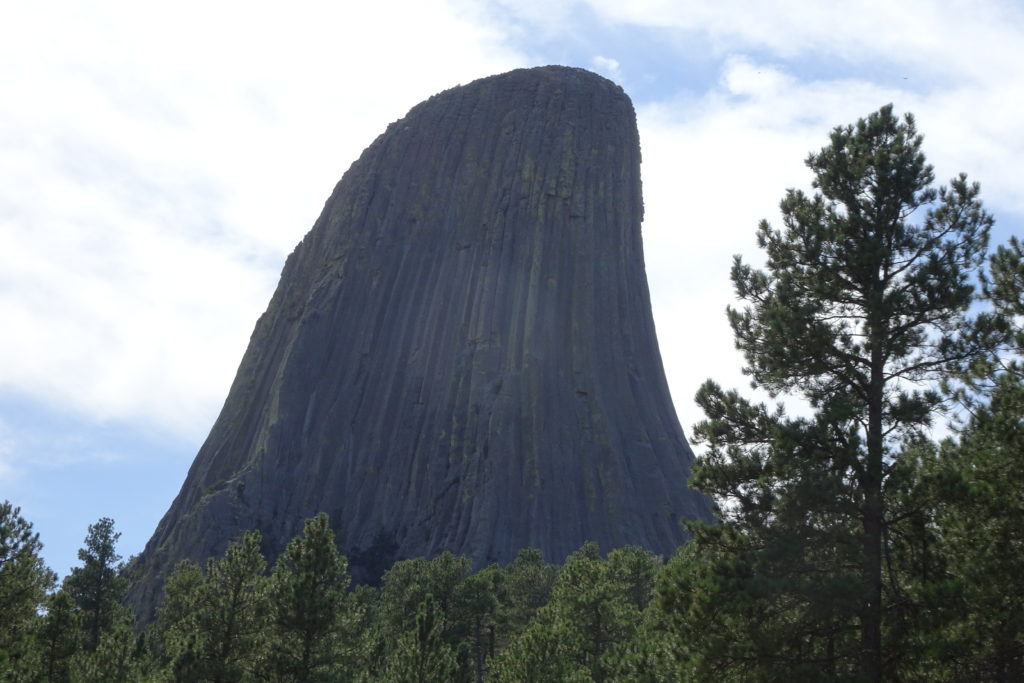
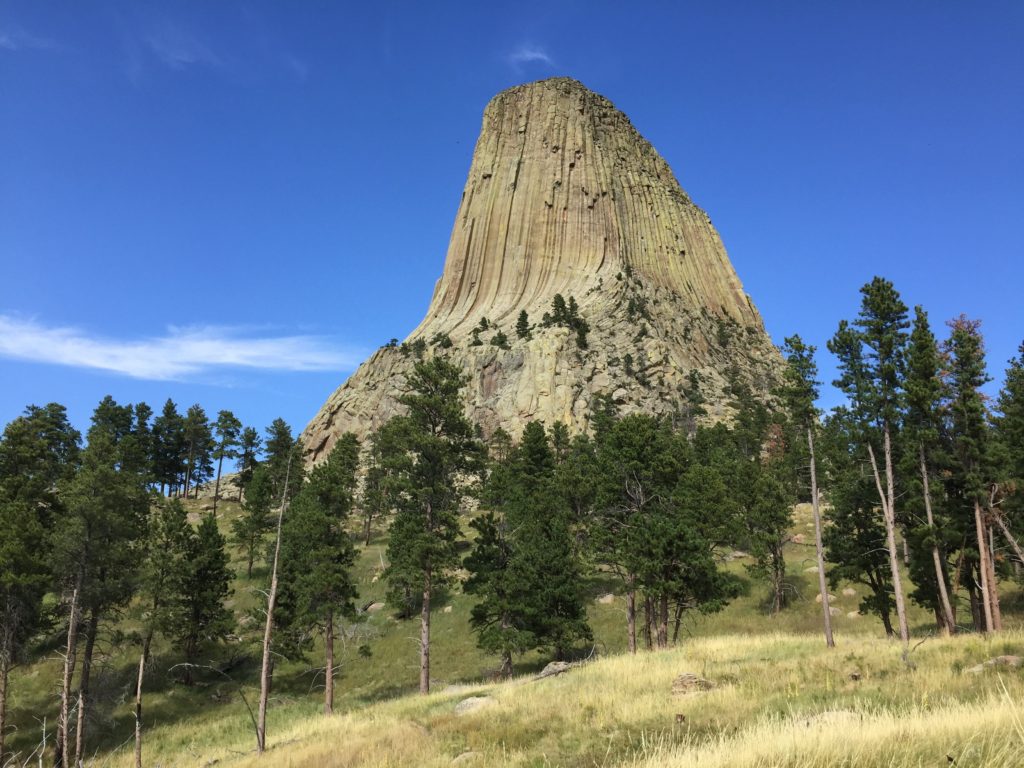
The only problem (besides the fact that what he did was illegal) was that his climbing gear did not land at the top, leaving him stranded with no gear and no supplies. Airplanes dropped food, warm clothing and water to him, but it was not clear how he was going to get down. Finally an expert climber volunteered to go up and get him. The expert and 7 other volunteers made it to the top with little difficulty, and Hopkins, who was in excellent condition, made it down safely.
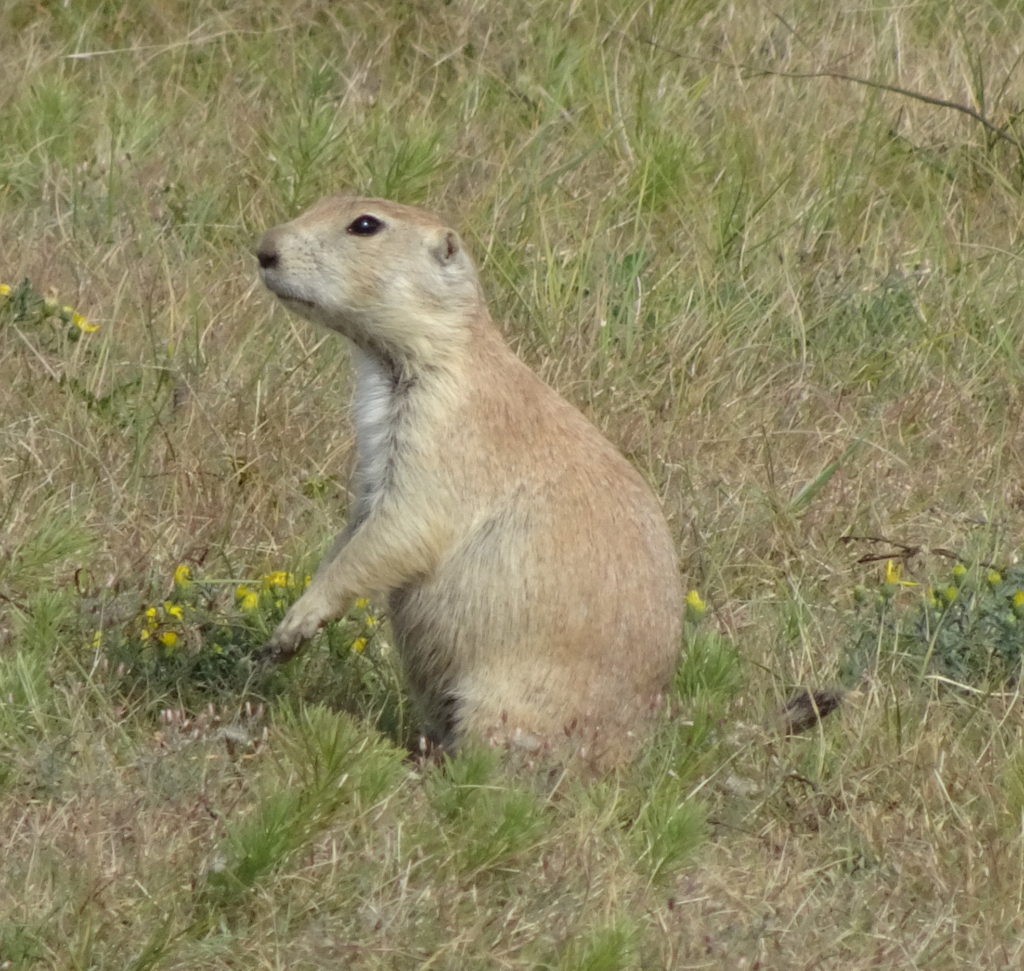
Devils Tower also has a large prairie dog town, close to the campground and the road. They are cute, but I bear in mind that the fleas that live on them carry the plague.
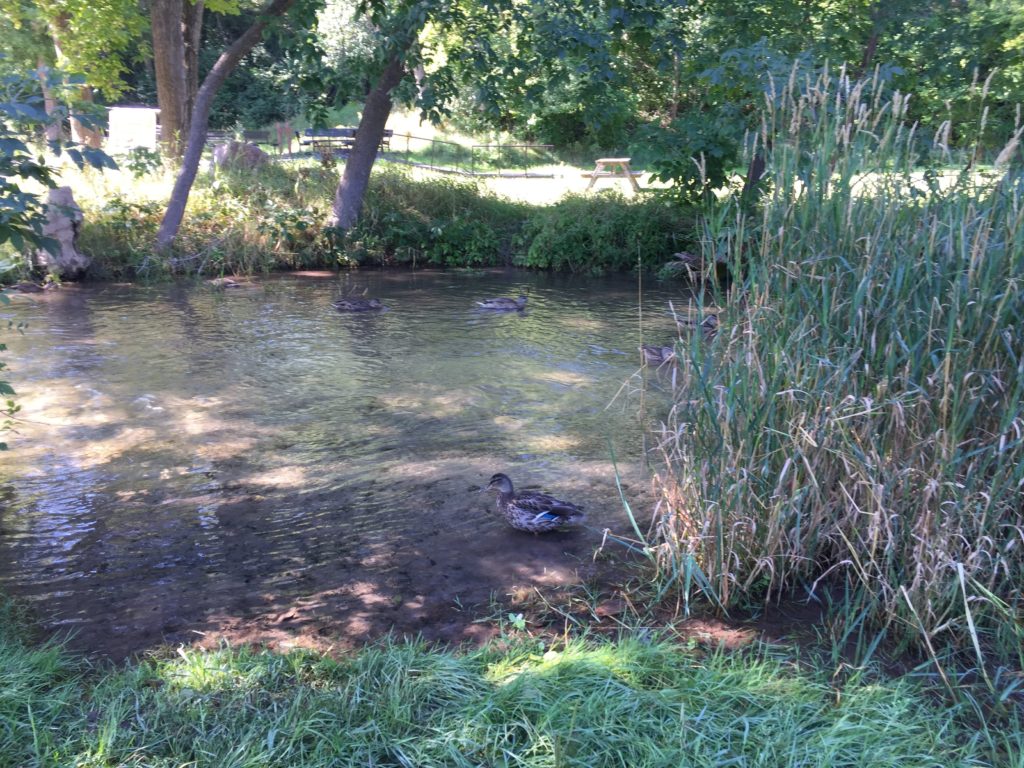
From Devils Tower we went to Spearfish, where we camped in the lovely municipal campground for 2 nights. The town itself is quite small, but it does have a couple of nice restaurants within walking distance of the campground. (The town is very small — everything is within walking distance of the campground.)
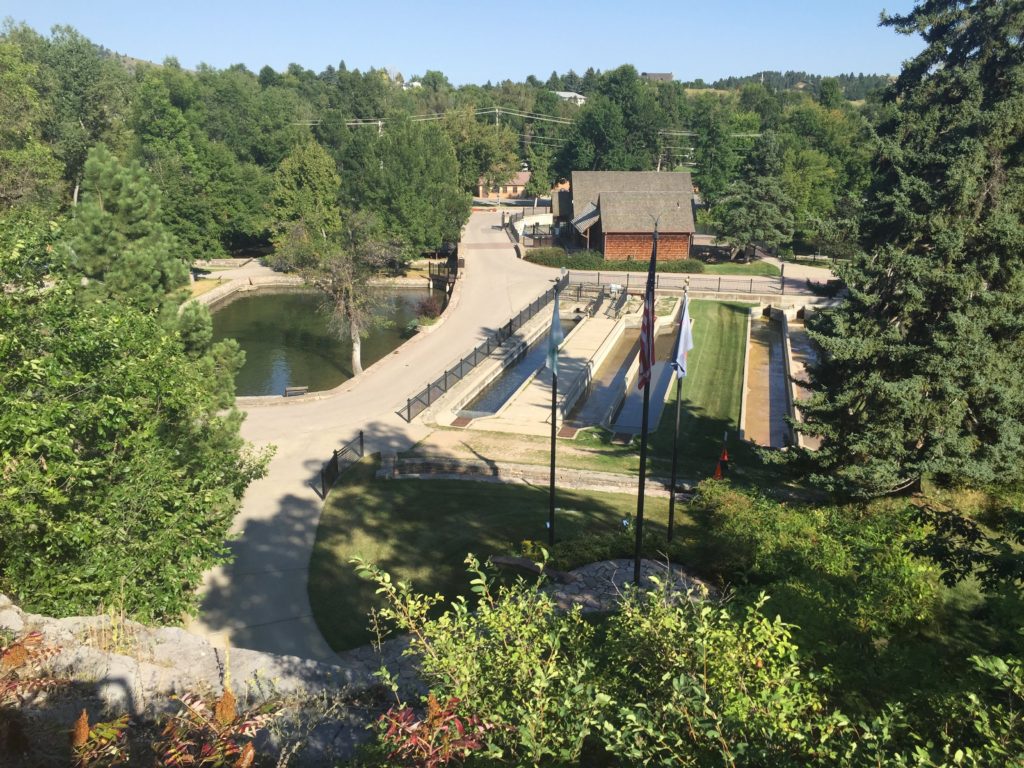
Right beside the campground is the D.C. Booth National Historic Fish Hatchery. This is the site of the first nationally funded fish hatchery. (I am pretty sure that both the campground and the adjacent civic park must be on land that was part of the hatchery.) They still hatch a few trout, but mostly it is a museum.
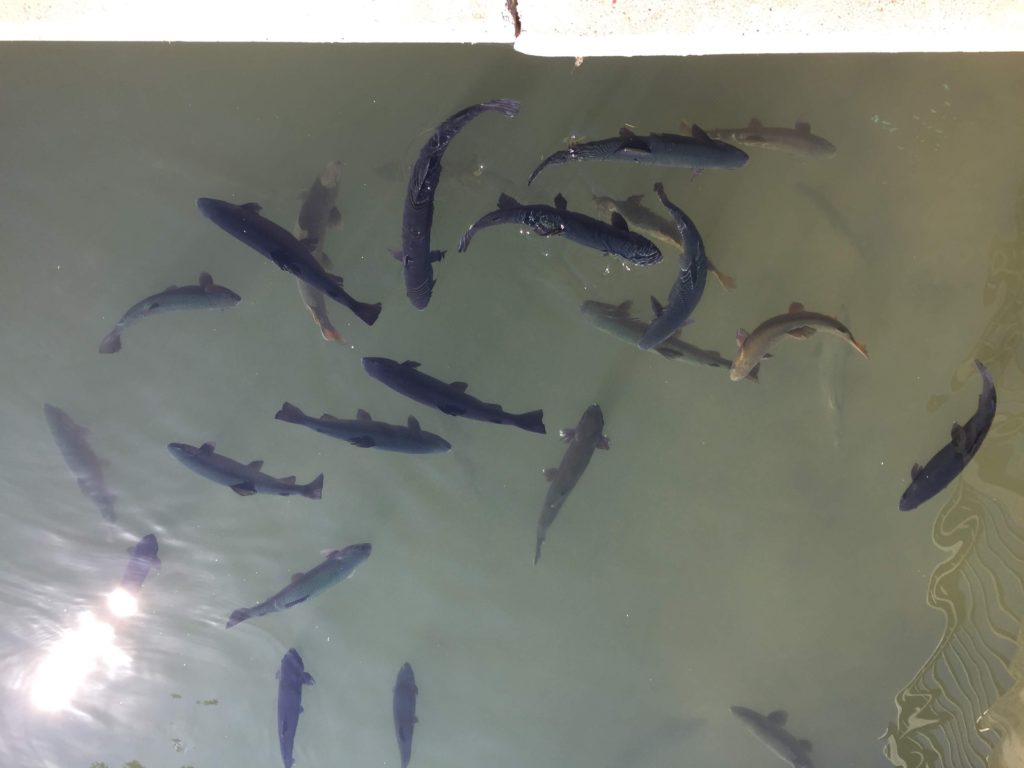
Trout are not native to the Black Hills, but rainbows, browns and cutthroats have been introduced for sport fishing. The museum shows how this was done in the old days, with the fingerlings carried to their release sites by horse and by foot in milk tins and buckets.
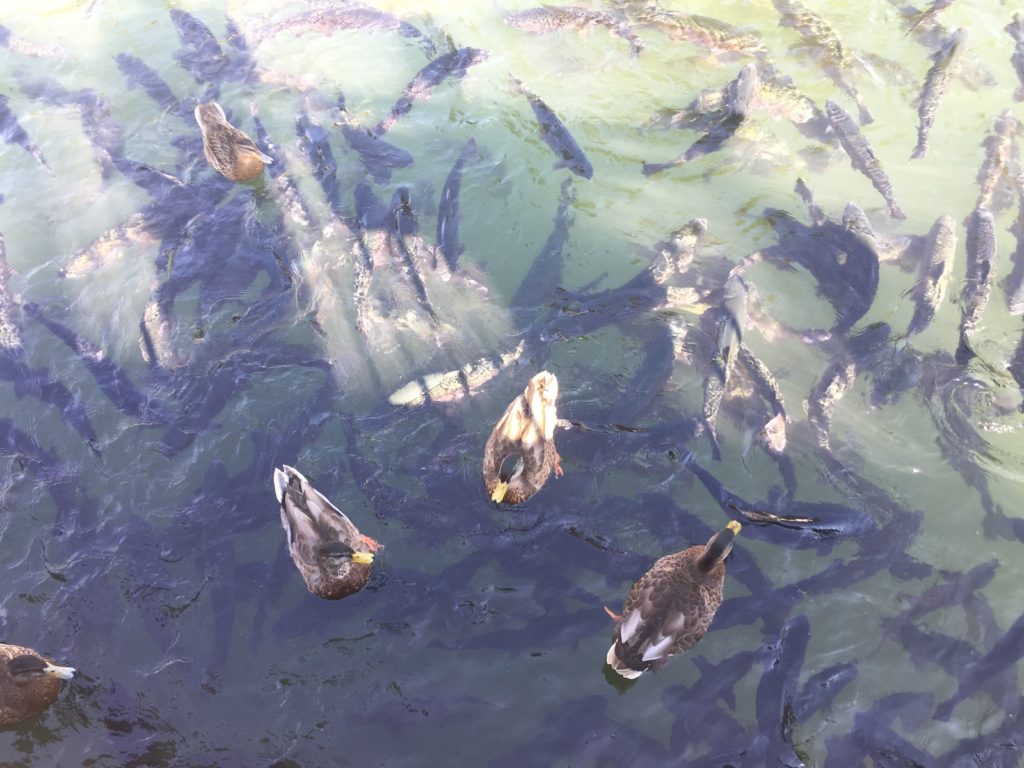
There is also a train car showing how the cars were fitted out to carry the hatchlings to the sites from which they were carried manually to their release sites.
What I liked best was the fish pond. Since these fish are kept for display, some of them are 6 years old or more. A 6 year old rainbow trout is enormous! You can purchase fish food and toss it to the fish. This of course causes quite a frenzy, and the local ducks also try to get in on the action.
